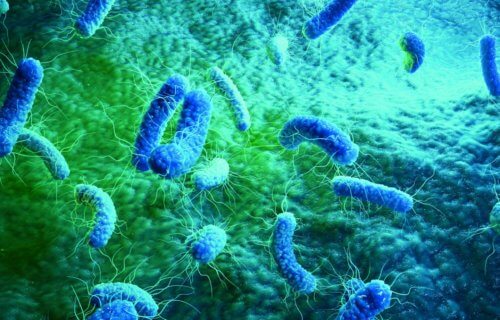PHILADELPHIA — Hospital superbugs could be destroyed by a new class of antibiotics, according to recent research. The new drugs have been described as a “potential landmark” in the war on antimicrobial resistance (AMR). It is the first discovery of its kind in more than three decades.
The World Health Organization (WHO) has declared AMR as one of the top 10 global public health threats against humanity. It is estimated that by 2050, antibiotic-resistant infections could claim ten million lives each year, costing the global economy more than $103 trillion.
Researchers from The Wistar Institute of Anatomy and Biology say these new drugs work against a wide range of bacteria by triggering the adaptive immune system: molecules that essentially morph in response to invading bugs, such as methicillin-resistant staphylococcus aureus (MRSA) and clostridium difficile (C diff.).
“We took a creative, double-pronged strategy to develop new molecules that can kill difficult-to-treat infections while enhancing the natural host immune response,” explains study lead-author, Dr. Farokh Dotiwala of the Vaccine & Immunotherapy Center at Wistar, in a statement.
The heyday of antibiotic discovery was in the 1950s and 1960s. The last one that made it into doctors’ hands dates back to 1987. Microbes have since become very resistant. So the team at The Wistar Institute focused on a metabolic pathway essential for most bacteria, but absent in humans.
The pathway, called methylerythritol phosphate (MEP), is responsible for biosynthesis of isoprenoids, or molecules required for cell survival in most pathogenic bacteria. The lab targeted an essential enzyme in the process known as IspH. It blocked the chemical and killed the microbes.
Given its broad presence, the approach has implications for the whole bacterial world. The new generation of antimicrobials have been named dual-acting immuno-antibiotics (DAIAs).
Resistance is acquired by mutating the bacterial target the antibiotic is directed against, inactivating the drugs or pumping them out. “We reasoned that harnessing the immune system to simultaneously attack bacteria on two different fronts makes it hard for them to develop resistance,” explains Dr. Dotiwala.
The list of bacteria that are becoming resistant to treatment with all available antibiotic options is growing. Few new drugs are in the pipeline, creating a pressing need for new classes of antibiotics to prevent public health crises. The researchers used computer modeling to screen several million commercially available compounds for their ability to bind with the enzyme. The most potent were selected as starting points.
Dr. Dotiwala and co-senior author of the study, Prof. Joseph Salvino of the Wistar Cancer Center, identified and synthesized novel IspH inhibitor molecules that were able to get inside the bacteria. In lab tests, they stimulated the immune system with more potent bacterial-killing activity and specificity than current best-in-class antibiotics. This included human samples of all types of antibiotic-resistant disease-causing bacteria including MRSA and E. coli.
In mouse experiments, they also outperformed traditional antibiotics. All the compounds were also shown to be non-toxic to human cells. “Immune activation represents the second line of attack of the DAIA strategy,” says first author Dr. Kumar Singh, a member of Dr. Dotiwala’s lab.
There is wide concern the world is cruising into a “post-antibiotic” era. It could leave many common infections untreatable and make many staples of modern medicine – including surgery, chemotherapy and organ transplants – impossible.
“We believe this innovative DAIA strategy may represent a potential landmark in the world’s fight against AMR, creating a synergy between the direct killing ability of antibiotics and the natural power of the immune system,” adds Dotiwala.
The study is published in the journal Nature.
SWNS writer Mark Waghorn contributed to this report.
